Birds are an important part of a home garden ecosystem. Not only do they add beauty and song to the garden, but they also help to control pests and promote pollination.
Home gardens can provide a habitat for various bird species, from tiny hummingbirds to majestic raptors. Food, water, and shelter are key elements in attracting and supporting birds in the garden.
Understanding the needs of different bird species and creating a welcoming environment can lead to enjoyable bird-watching experiences in your backyard.
In this article, we will explore some common birds found in home gardens and how to create a bird-friendly environment in your garden.
8 Birds For Your Home Garden
Introducing birds to your home garden can be both enjoyable and beneficial. They add beauty and natural sounds to your outdoor space and contribute to pest control and pollination.
Here are eight common birds you might consider attracting to your garden:
1. Northern Cardinal
The Northern Cardinal is a beautiful bird, easily identified by its bright red plumage. It can be found in the eastern United States from Maine to Minnesota and south through Mexico and Belize.
Along with its striking coloration, it has a distinctive crest on its head and sharp black facial markings around the eyes.
Despite their small size (7-9 inches), they are very vocal birds – males sing persistently throughout springtime to attract mates or proclaim their territory.
They typically feed on insects, seeds, and fruits but enjoy suet at backyard bird feeders.
The female is less brightly colored than her mate but still stands out among other songbirds due to her warm brownish-red feathers.
Cardinals pair for life, so you may often see them together in your garden or neighborhood park.
Scientific classification:
| Kingdom | Animalia |
| Phylum | Chordata |
| Class | Aves |
| Order | Passeriformes |
| Family | Cardinalidae |
| Genus | Cardinalis |
| Species | C. cardinalis |
Also Featured In: Most Common United States Birds, Most Common Winter Birds
2. House Sparrow

The house sparrow is a small bird of the Passeridae family. It has an average length of 16 cm and weighs 24-39.5 gm.
Females have dull brown and grey plumage, whereas males are brighter, with black, white, and brown markings on their wings and back feathers.
This species is one among 25 different kinds in its genus Passer. These birds are found worldwide, mainly near human dwellings where they feed off food scraps from garbage bins or gardens.
They also make nests close to houses, making them even more visible to nearby people.
House sparrows can be seen hopping around yards for food during daytime hours but usually hide in colonies at night.
Scientific classification:
| Kingdom | Animalia |
| Phylum | Chordata |
| Class | Aves |
| Order | Passeriformes |
| Family | Passeridae |
| Genus | Passer |
| Species | P. domesticus |
Also Featured In: Most Common Songs Birds that Live around You, Birds That Live in Colorado
3. Hummingbirds
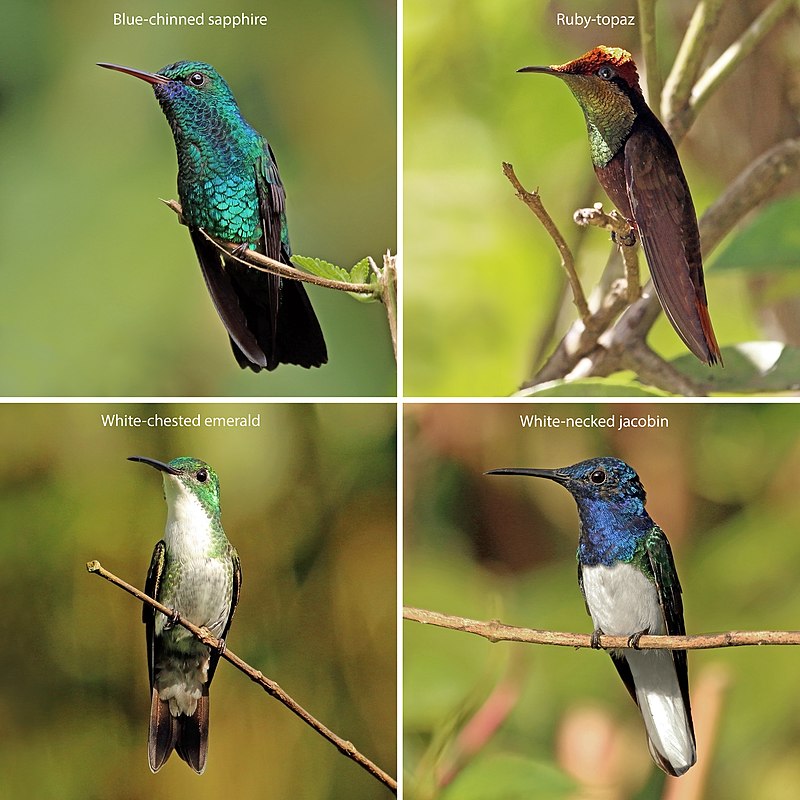
Hummingbirds are tiny birds throughout the Americas, from Alaska to Tierra del Fuego. Most species measure 3-5 inches long and weigh less than an ounce.
The smallest hummingbird is only 2 inches long. Hummingbirds have a unique ability to hover by rapidly flapping their wings up to 80 times per second.
They feed on nectar and insects, with some species even able to drink sap or eat pollen directly off flowers.
Their vibrant colors make them instantly recognizable as they dart through gardens searching for food and mates.
Hummingbirds truly bring joy into our lives as they remind us that nature’s beauty can be seen around every corner if we take the time to look for it.
Scientific classification:
| Kingdom | Animalia |
| Phylum | Chordata |
| Class | Aves |
| Order | Apodiformes |
| Family | Trochilidae Vigors, 1825 |
Also Featured In: Famous Paintings Birds, Birds that Live in the Deserts
4. Finches
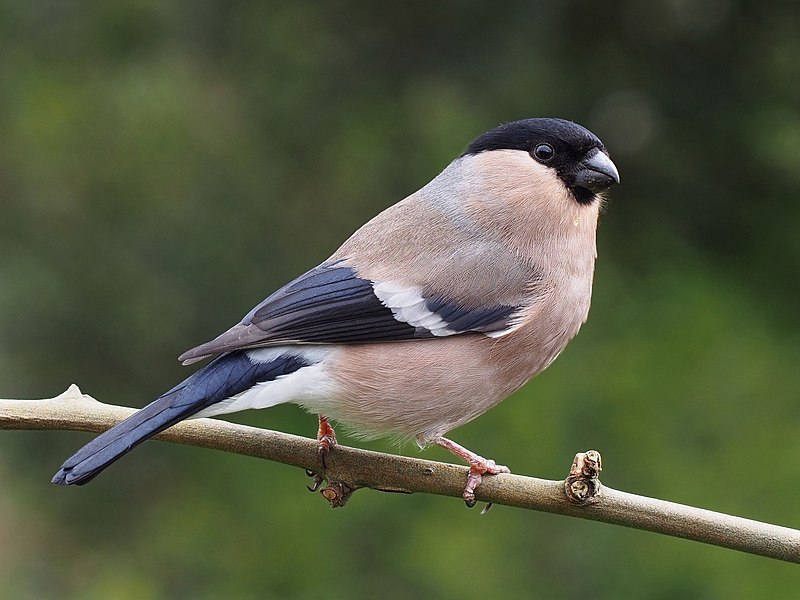
Finches are a diverse group of passerine birds found worldwide, excluding Australia and polar regions. They vary from small to medium-sized, with stout conical bills adapted for eating seeds and nuts.
Many species have brightly colored plumage; this helps them stand out against their natural habitats, ranging from deserts to forests.
Finches occupy these areas all year round without migrating elsewhere – making them particularly well suited for local environments.
As part of the Fringillidae family, they possess unique characteristics that make them popular amongst birdwatchers everywhere.
Scientific classification:
| Kingdom | Animalia |
| Phylum | Chordata |
| Class | Aves |
| Order | Passeriformes |
| Superfamily | Passeroidea |
| Family | Fringillidae Leach, 1820 |
Also Featured In: Native Pakistani Birds, Blue Birds You’ll Found around Us
5. Woodpeckers
Woodpeckers are an incredibly diverse bird species found worldwide, except for Australia, New Guinea, New Zealand, Madagascar, and the extreme polar regions.
They live in various habitats, including forests, woodlands, rocky hillsides, and deserts with no trees.
Their beaks are adapted to pecking at tree bark to find food, such as insects or larvae hidden beneath it, while they use their long tongues to catch them from deep inside crevices.
Woodpeckers have tough skulls that protect their brains from impact when they bang into things during drumming – a behavior used by males for territorial signaling and reproduction purposes using strong rapid beats against hollow objects like dead branches or metal poles.
Scientific classification:
| Kingdom | Animalia |
| Phylum | Chordata |
| Class | Aves |
| Order | Piciformes |
| Infraorder | Picides |
| Family | Picidae Leach, 1820 |
Also Featured In: Most Common Types of Bangladeshi Birds, Common Serbian Birds
6. Common Blackbird
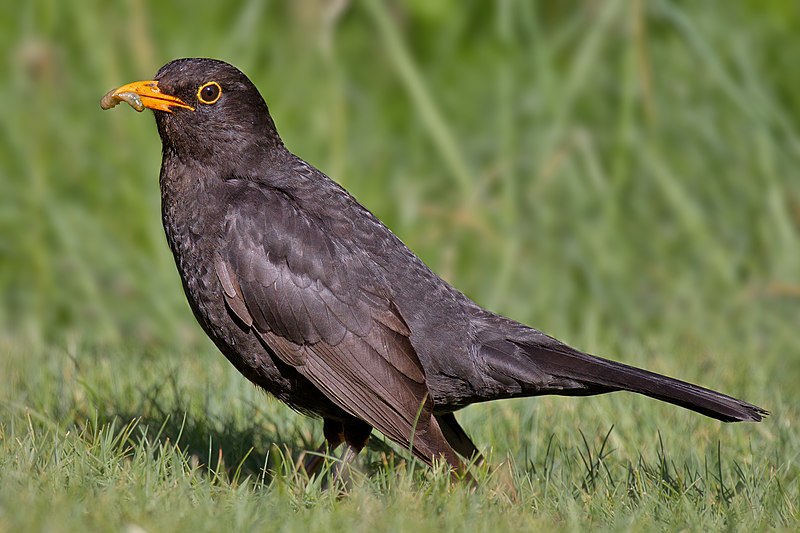
The Common Blackbird is a species of true thrush with the scientific name Turdus merula. Found in Europe, Asiatic Russia, and North Africa, it has also been introduced to Australia and New Zealand.
The male bird has glossy black plumage, while the female’s coloration is more brownish gray.
It is known for its melodious song that can be heard throughout the year; typically, they are seen alone or in pairs but occasionally form large flocks when food sources become available or during migration periods.
Its diet consists mainly of insects, worms, berries, and other fruits and some human-provided foods such as bread crumbs or garbage scraps when available.
With its wide distribution range and ease of adaptation to different habitats, this species will likely remain one of the most common birds.
Scientific classification:
| Kingdom | Animalia |
| Phylum | Chordata |
| Class | Aves |
| Order | Passeriformes |
| Family | Turdidae |
| Genus | Turdus |
| Species | T. merula |
Also Featured In: Birds of United Kingdom, Flocks Birds around Us
7. Swallows
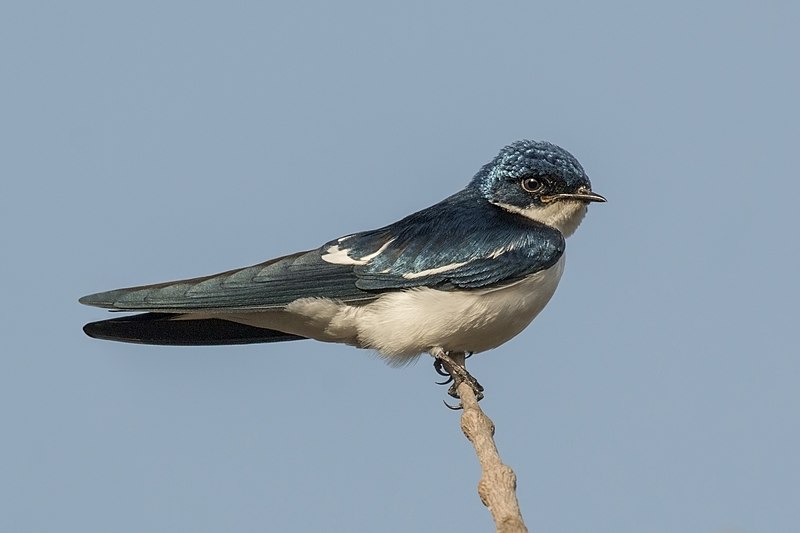
Swallows are small songbirds found worldwide on all continents, even Antarctica. They have a distinctive appearance and are highly adapted to aerial feeding with their long wings and forked tails.
There are an estimated 90 species of swallows in 19 different genera, making them one of the most widespread bird families on earth.
The barn swallow is perhaps the most well-known species among these birds due to its presence near human settlements across Europe; they’re so ubiquitous that “swallow” has become synonymous with this particular type of bird there.
Swallows also play important roles in ecology as insectivores, some species migrating vast distances yearly between summer breeding grounds and wintering locations.
Scientific classification:
| Kingdom | Animalia |
| Phylum | Chordata |
| Class | Aves |
| Order | Passeriformes |
| Suborder | Passeri |
| Family | Hirundinidae Rafinesque, 1815 |
Also Featured In: Most Common Romanian Birds, House Birds You’ll Love to Pet
8. Columbidae
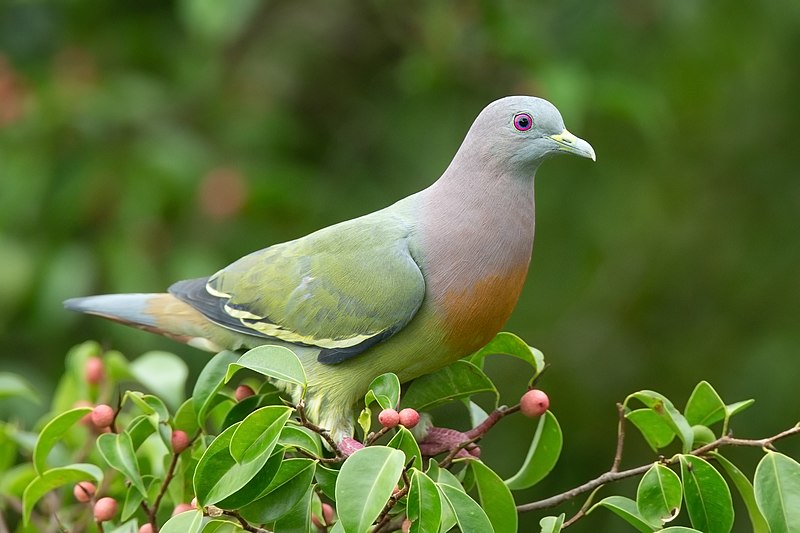
Columbidae is a bird family that includes both doves and pigeons. These birds are characterized by their stout bodies, short necks, and small, slender bills with fleshy ceres in some species.
They feed mainly on seeds, fruits, and plants found worldwide but have the greatest variety in the Indomalayan and Australasian regions.
Columbidae have an unmistakable soft cooing sound, making them one of the most beloved avian families worldwide – especially among city dwellers.
Whether it be feeding time or hearing their soothing call throughout nature walks, these birds will remain a favorite for many years.
Scientific classification:
| Kingdom | Animalia |
| Phylum | Chordata |
| Class | Aves |
| Clade | Columbimorphae |
| Order | Columbiformes Latham, 1790 |
| Family | Columbidae Leach, 1820 |
Also Featured In: birds of white, Flight Birds You Should Know
Conclusion
Attracting birds to your home garden can enhance its beauty, provide natural pest control, and contribute to the ecosystem. You can invite a diverse array of avian visitors by creating a bird-friendly environment with suitable food sources, water features, shelter, and nesting sites.
Whether it’s the American Robin’s melodious songs or the Northern Cardinal’s vibrant colors, incorporating these feathered friends into your garden can bring joy and ecological benefits to your outdoor space.